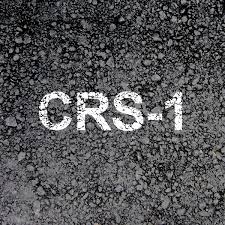
Emulsion Bitumen CRS
Bitumen CRS are usually made by passing the mixture of hot bitumen and water phase between a rotating disc, cone or wheel and a stator. In the emulsification process, hot binder is mechanically separated into minute globules and dispersed in water treated with a small quantity of emulsifying agent.
Some of CRS grades are:
- CRS-1 tack, (rapid set, low viscosity, stored @ cooler temps).
- CRS-1h tack, (rapid set, low viscosity, stored @ cooler temps, hard penetration).
- CRS-2 tack and seal coat, (rapid set, high viscosity, stored @ higher temps).
- CRS-2 prime, tack, seal, and cold mix.
Advantage of using emulsion asphalt CRS:
Little or no hydrocarbon emissions
The ability to coat damp aggregate
Can use cold materials at remote sites
No petroleum solvent required to liquefy
In most cases, used with no additional heat
Wide variety of emulsion types available today
Data Sheet of CRS:
| PROPERTY | UNIT | SPEC. | METHOD |
| Kinematic Viscosity 50°C | Centistokes (CST) | 20-100 | ASTM D2170 |
| Residue on Sieving, 600 Micron IS | Mass Percentage (%) | 0.05 max | ASTM D244 |
| Storage stability after 24 hours | Percentage (%) | 2 max | ASTM D244 |
| Binder Residue by Evaporation | Percentage (%) | 60 min | ASTM D244 |
| Setting Time | Minutes (′) | 15 | ASTM D244 |
| Penetration, 50 °C | 1/10 Millimeters (mm) | 60-200 | ASTM D5 |




